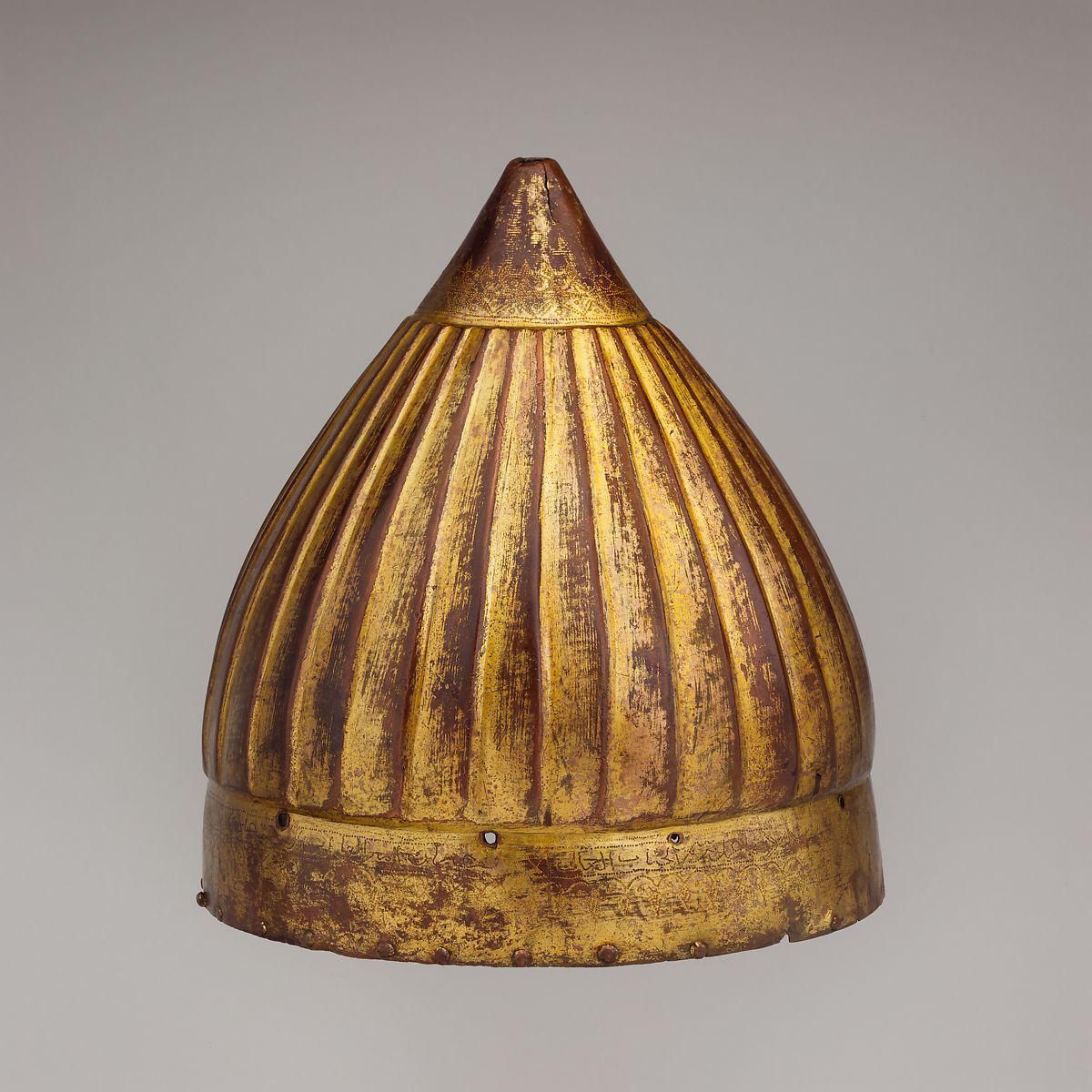
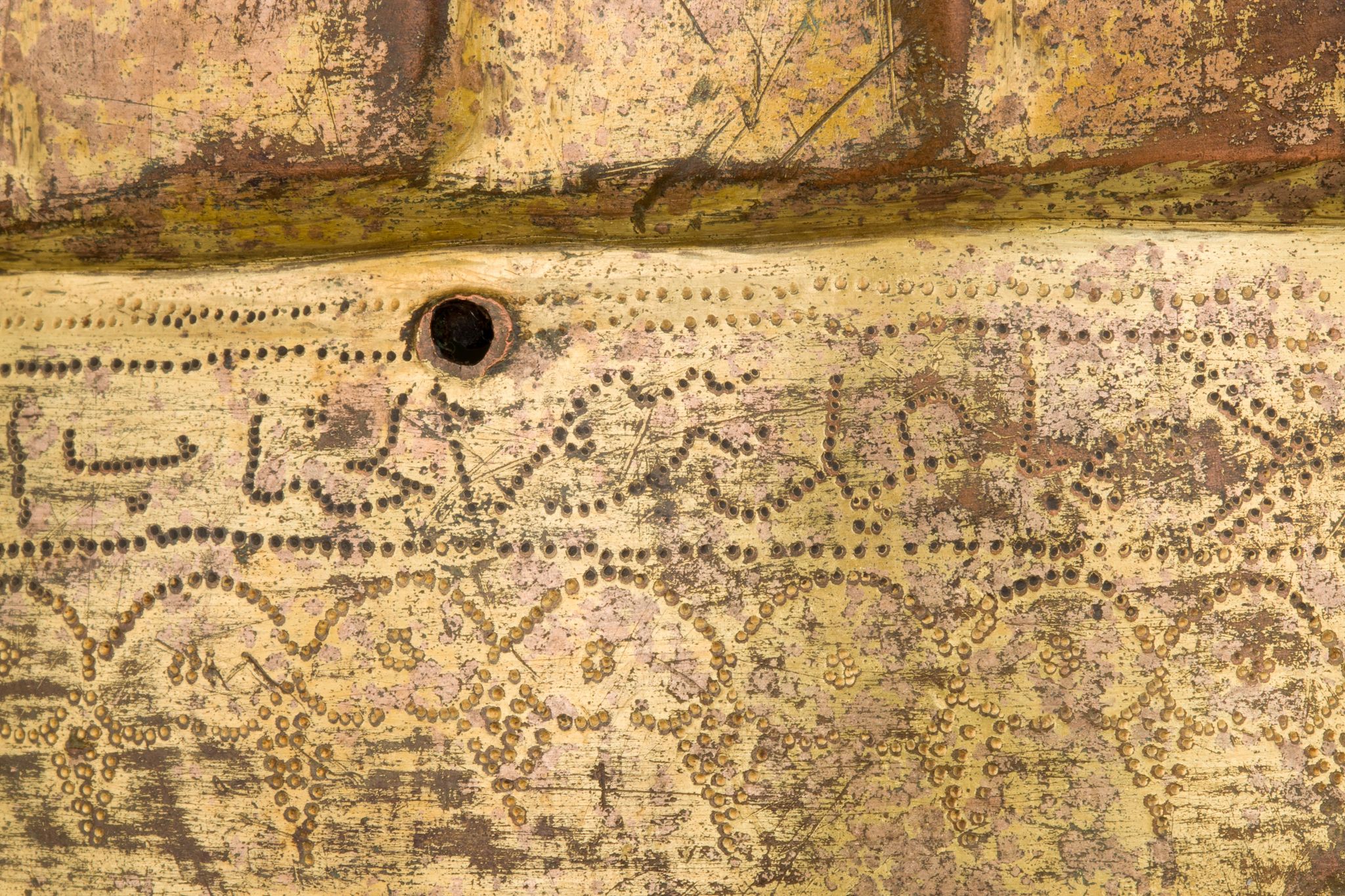
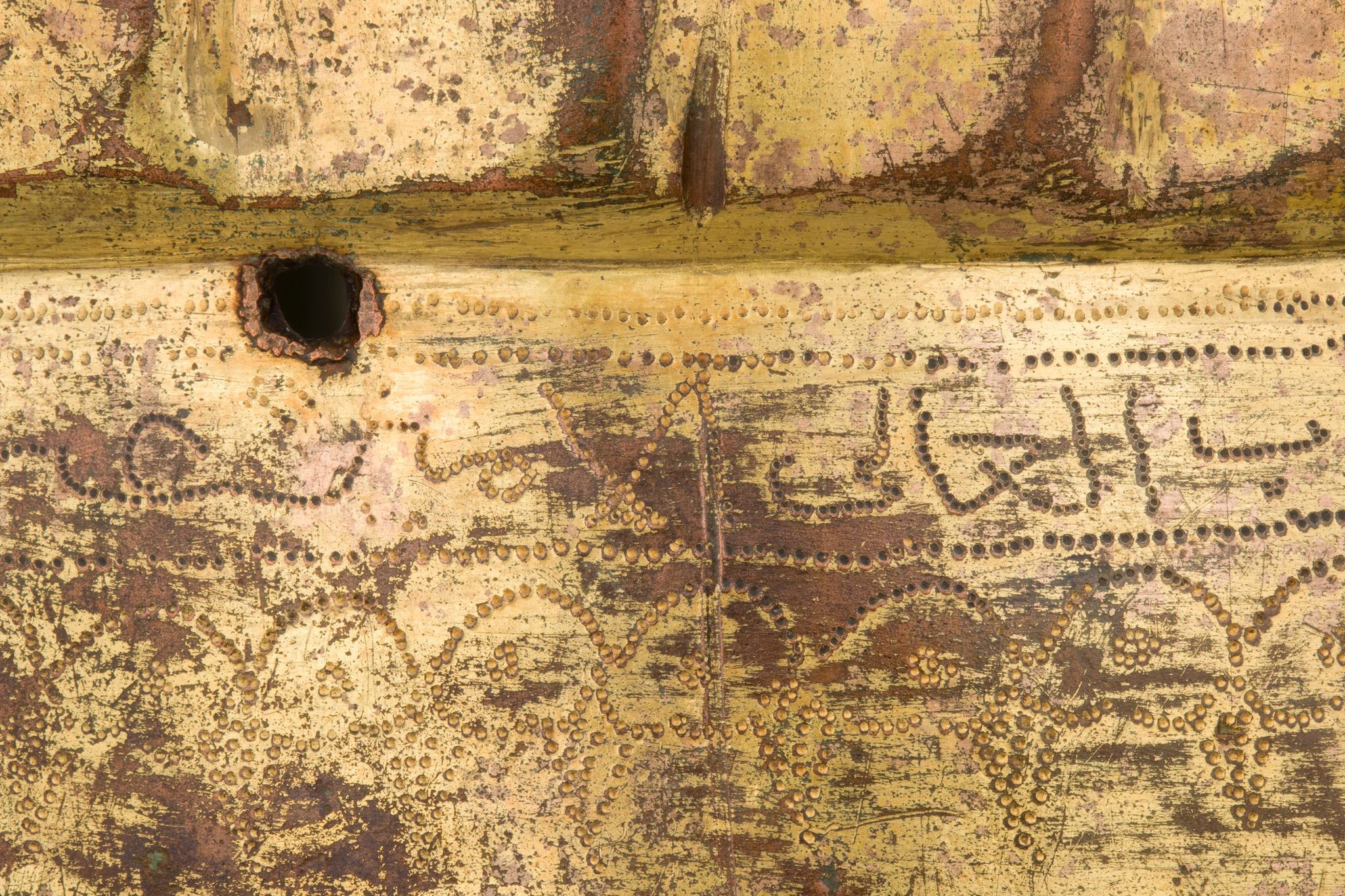
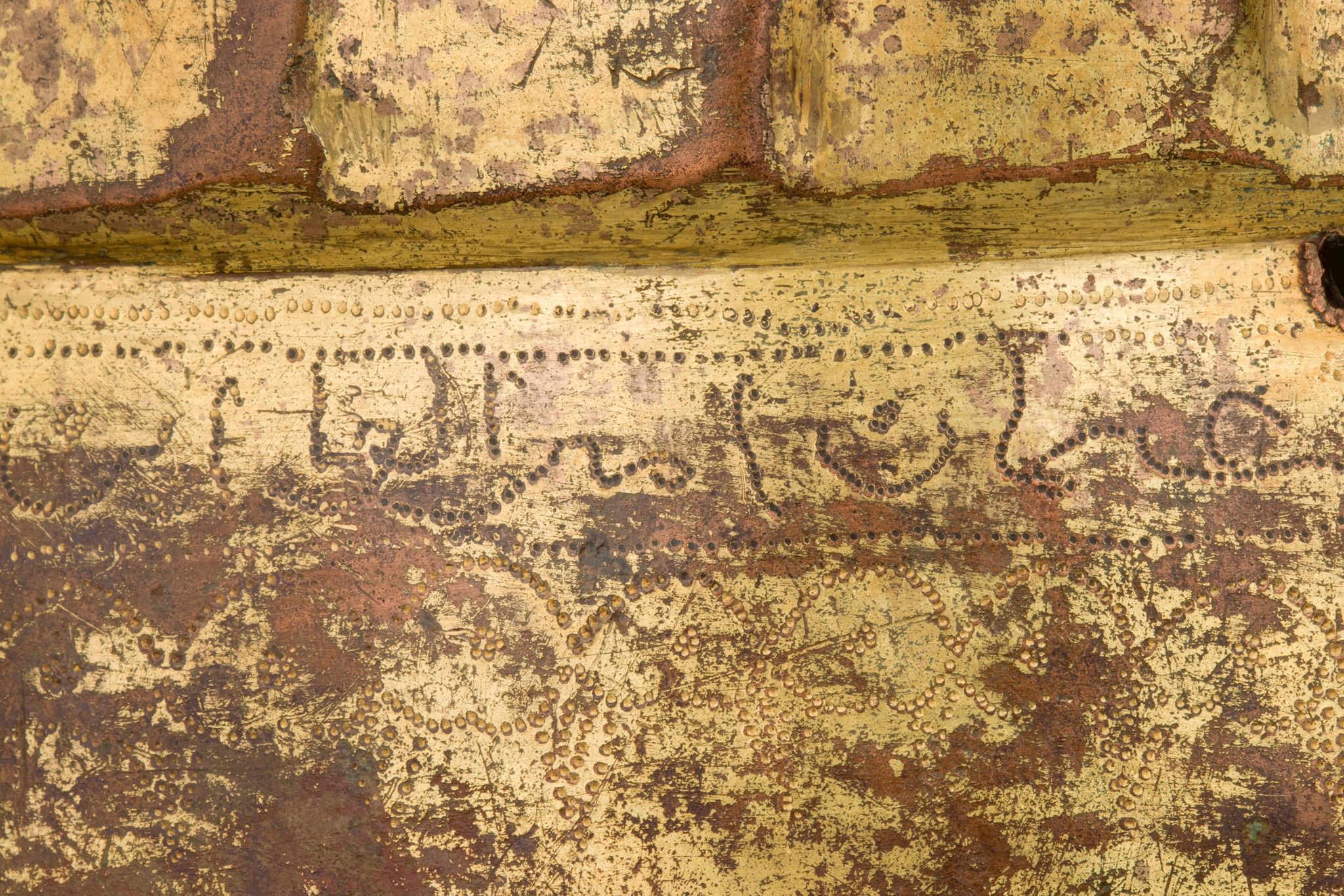
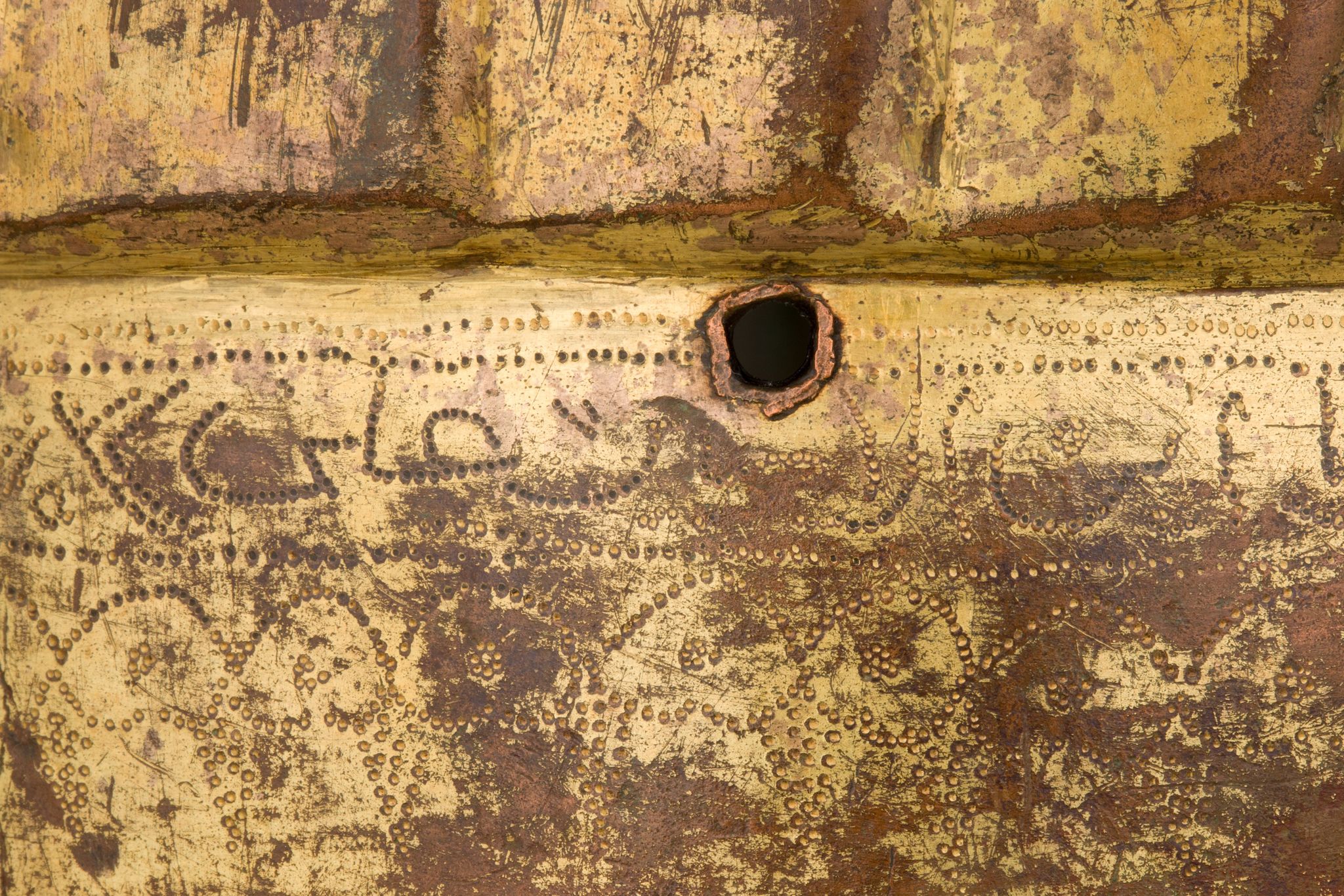
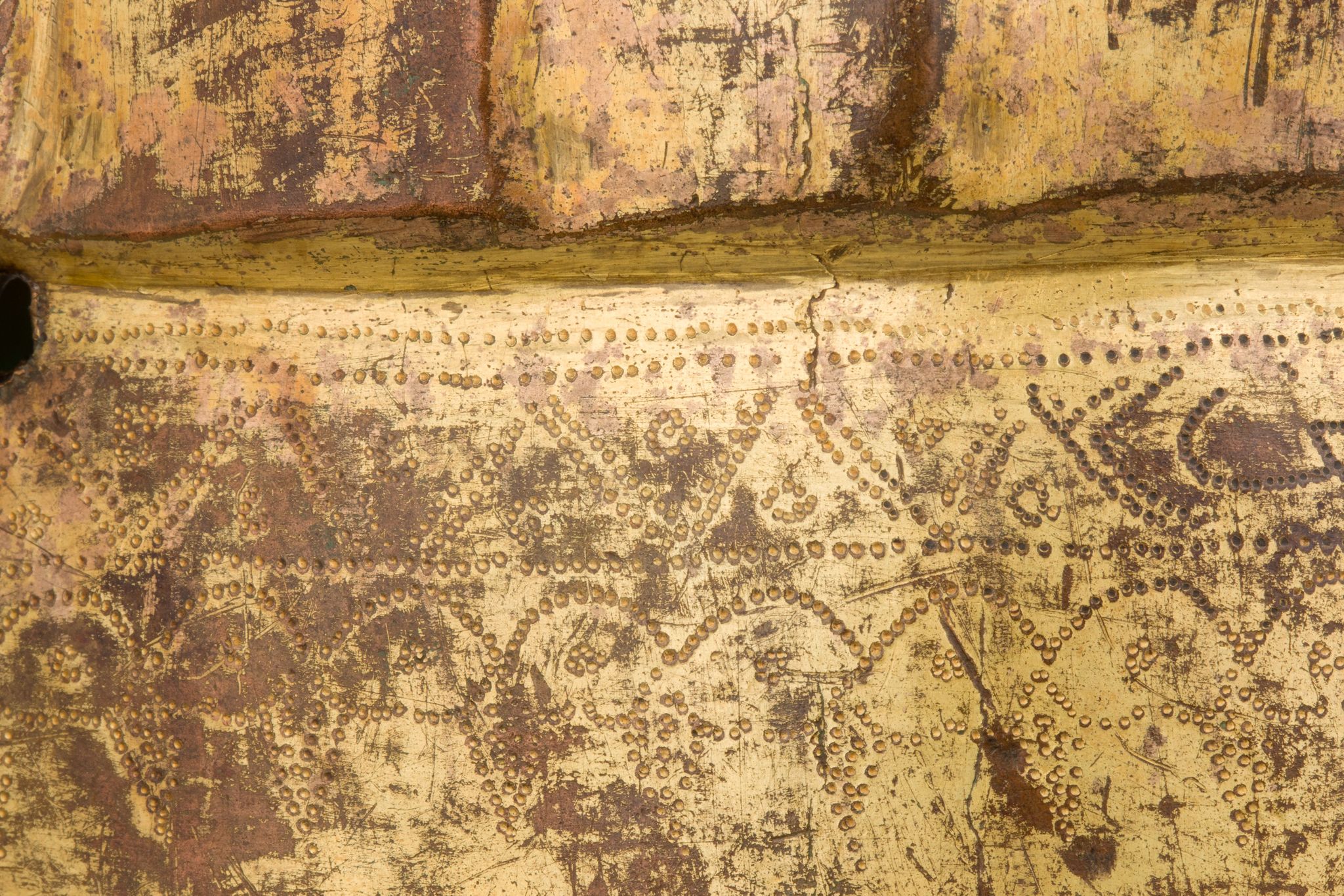
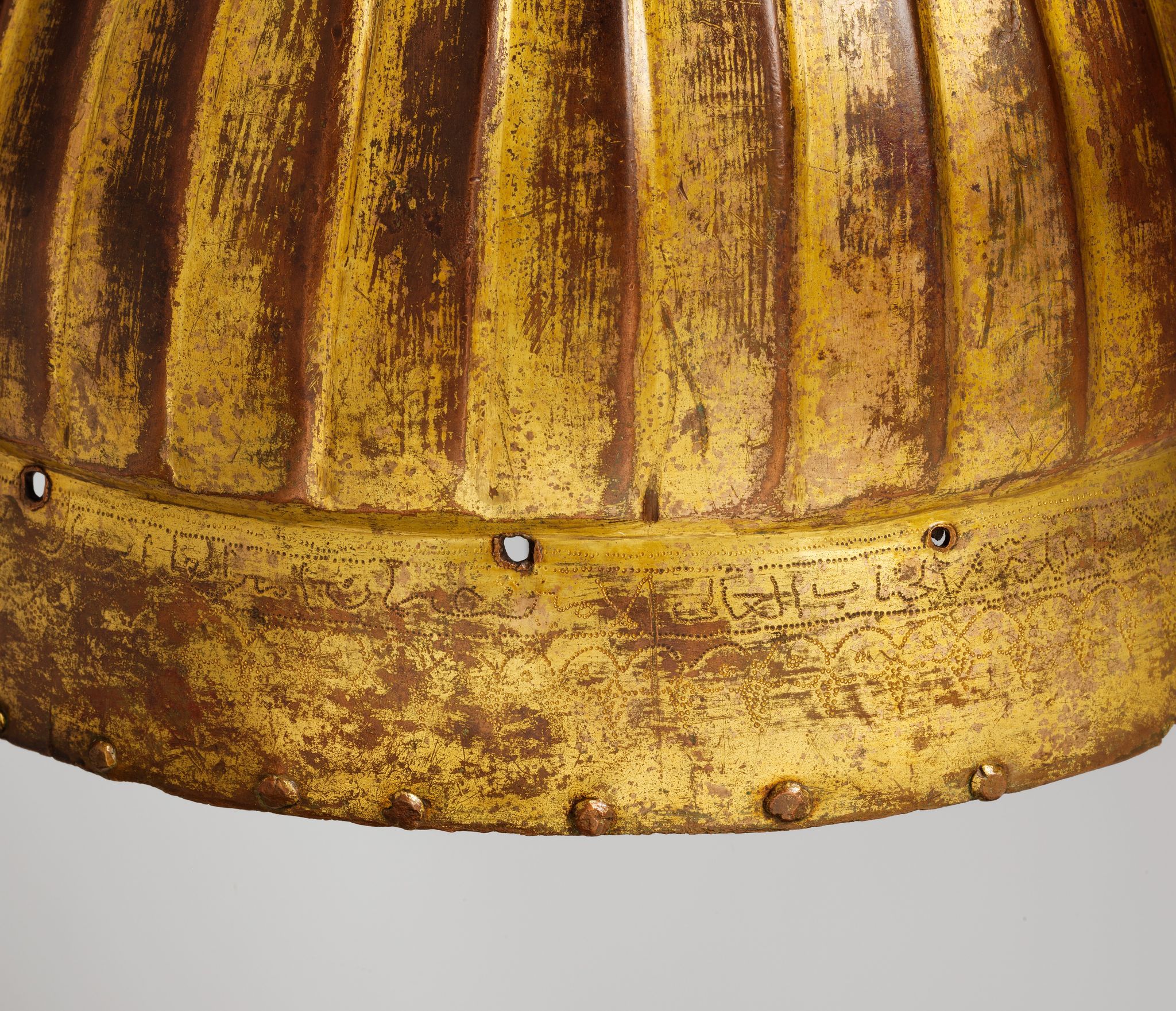
Helmet
Unknown Artist
There appeared in the sixteenth century a new type of armor worn by the Ottoman warrior that was unlike any seen elsewhere in the Islamic world: helmets, shields and shaffrons (horse's head defenses) made entirely of gilt copper, tombak in Turkish. The medium was employed purely for its colorful effect and ostentation, so that the armor can have been intended only for ceremonial use, possibly for the sultan's bodyguard. Until recently, the Metropolitan possessed two incomplete helmets (acc. nos. 36.25.125, 1974.118) and three shaffrons (acc. nos. 21.102.3, 36.25.496, and 36.25.507) in tombak. While the present helmet is a modest example of this genre, and, like many Ottoman helmets, has since lost its applied brim, nasal bar, and suspended nape defense and cheekpieces, not to mention its finial, it nevertheless is a welcome addition to our collection of Islamic arms because of its unusual form and its inscription.
While the majority of Turkish helmets are of modified conical shape, this one is noteworthy for the simulation of vertically overlapping plates, a type of helmet construction found in Central Asia and elsewhere. The lower edge and apex, which are slightly stepped in from the middle zone, are decorated with punched geometric and stylized foliate ornament. The lower edge for about one quarter of its circumference also bears a punched inscription in Arabic that reads in translation, "What was made for His Excellency the emir 'Uthman, the Commander, son of the emir 'Ali." Despite its now rough condition, this helmet evidently belonged to a high ranking Ottoman officer, one whose identity and dates of service remain to be discovered.
Credit: From the Collection of Nina and Gordon Bunshaft, Bequest of Nina Bunshaft, 1994
Early 17th century
Copper alloy (tombak), gold
22.2 x 20.3 cm
1995.68
Image and text © Metropolitan Museum of Art, 2025
Where you'll find this
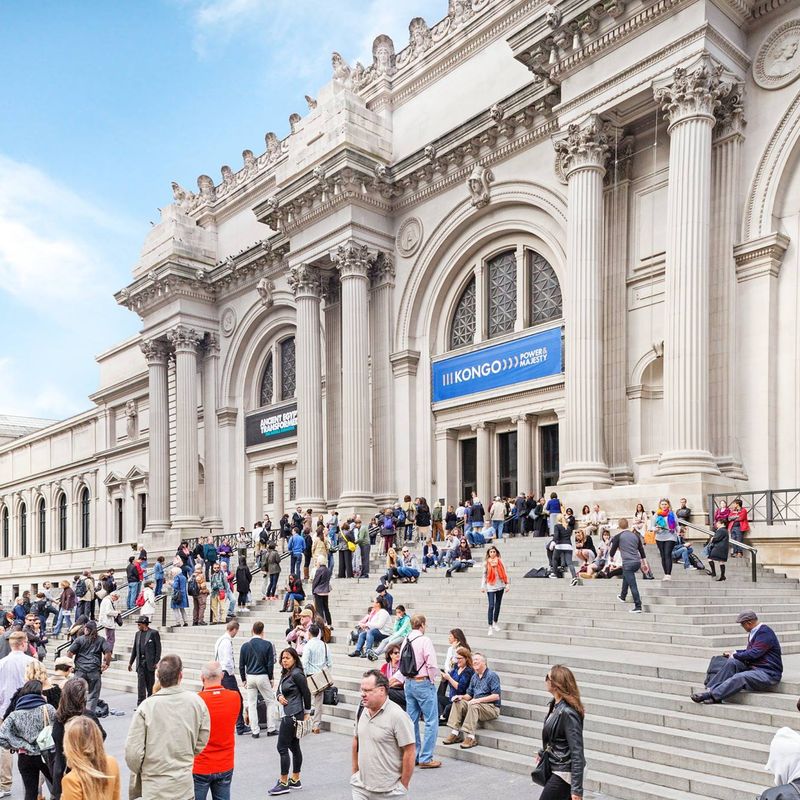
The Metropolitan Museum of Art
Permanent collection
